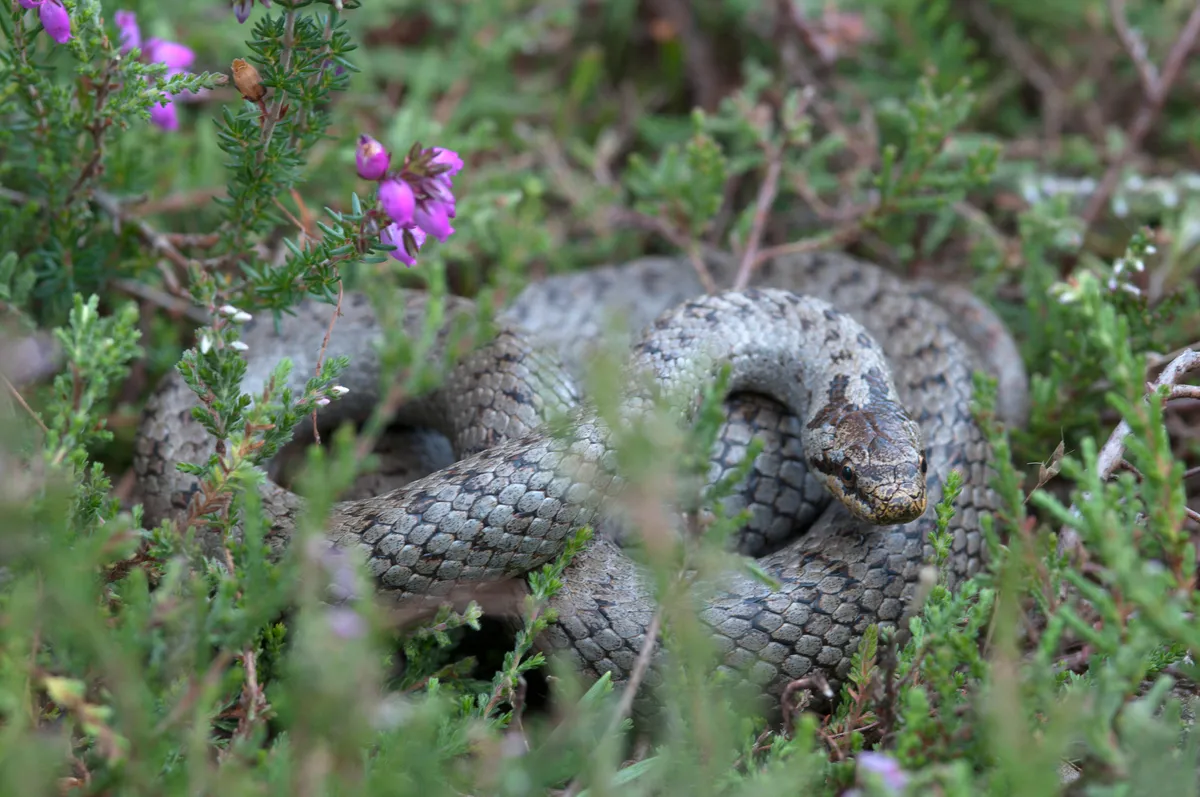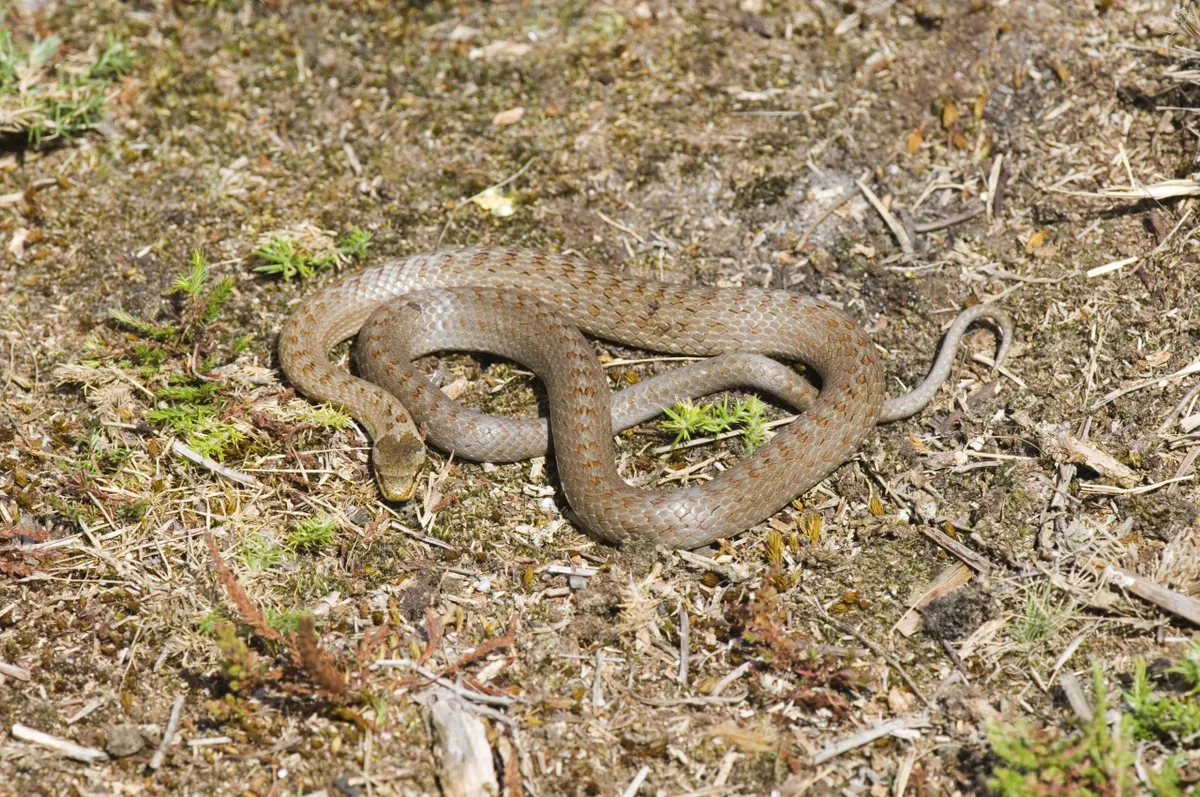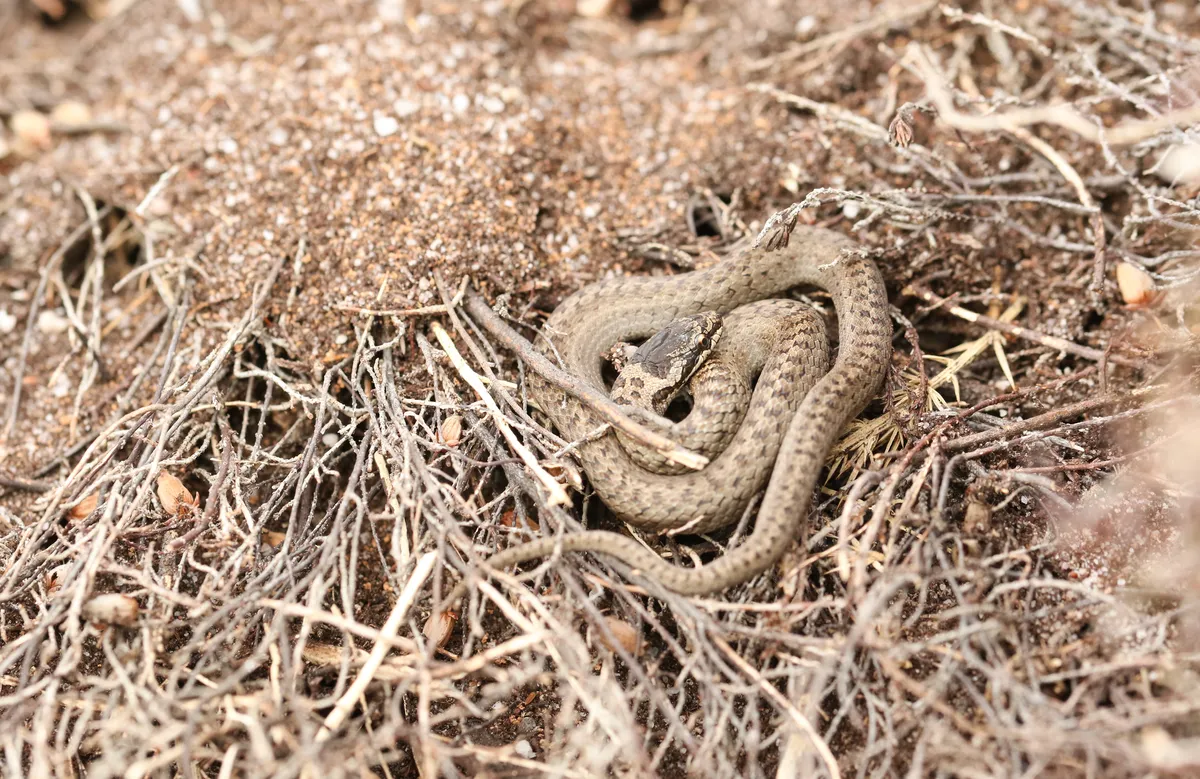The smooth snake is one of three native snake species found in the UK, and is our rarest terrestrial reptile. Here is our expert guide by zoologist and PhD researcher Steve Allain:
How big do smooth snakes get?
Smooth snakes are smaller than most people imagine, usually only growing to 60-70 cm in length.
What do smooth snakes look like?
Smooth snakes have a very similar appearance to the adder, although they can be distinguished by a rounder head and much slender build.
Their body tends to be either grey or brown with a paler underbelly and black markings arranged in bars or rows of dots down their back. The pattern on its back is also less defined and striking than that of the adder.

Are smooth snakes actually smooth?
The scales of smooth snakes are smooth and flat to the touch. In comparison, grass snakes and adders have a keel down the middle of each scale.
What do smooth snakes eat?
On sites that smooth snakes are found, you generally tend to find all six native species of reptiles. This makes perfect sense when you learn that smooth snakes primarily predate on other reptiles although they occasionally also eat small mammals and birds.
Like the grass snake, they lack venom but they constrict their prey instead.
How rare are smooth snake?
Smooth snakes are the UK’s rarest terrestrial reptile species with populations being restricted to sandy heaths in Dorset, Hampshire and Surrey, although the snakes are widely distributed in Europe.
Action is being taken to safeguard smooth snakes for the future, conservation efforts have included the reintroduction of populations to Devon and West Sussex.
The main caused of population declines is the loss of suitable habitat, with heathland usually being converted to plantations or developed into housing or agriculture. Smooth snakes are protected under both UK and European legislation.

When do smooth snakes breed?
Smooth snakes emerge from hibernation slightly later than grass snakes, first being seen in mid-April to early May. Mating takes place shortly after.
Like adders, smooth snakes are ovoviviparous, which means that they incubate their eggs internally and give birth to live young. The young that look like miniature versions of the adults are born in September, clutch sizes typically range between 4 and 15 young.

Do smooth snakes hibernate?
Like other reptiles found in the UK, smooth snakes typically enter hibernation in October.
Does anything eat smooth snakes?
Smooth snakes are not immune to predation, they may be eaten by other predator species such as birds of prey, foxes and weasels.
If threatened, a smooth snake can secrete a foul smelling substance. This is excreted from its anal glands.
Steven Allain is an avid herpetologist, photographer, researcher and science communicator. His research covers a range of topics, which most recently has involved investigating the population dynamics of grass snakes and the effects of ophidiomycosis.
One of his main missions outside of his research is to communicate the growing need for interest in the conservation of amphibians and reptiles.
Steven also helps to engage members of the public through a number of different means such as via social media and podcasts, to answer their questions about amphibians and reptiles, whilst also reiterating whilst these two groups of animals are vital components of a healthy ecosystem.
Main image: Smooth snake in Dorset. © David Tipling/Universal Images Group/Getty

